the bomb Exhibit and Symposium
Last updated 2025-04-14

the bomb is a groundbreaking multimedia installation that immerses audiences in the strange, compelling, and unsettling reality of nuclear weapons. Almost eight decades have passed since a city was destroyed by an atomic bomb, but the danger never went away. We are now confronted by a world in which nine nations possess about 12,000 nuclear weapons. All of those nations are modernizing their arsenals, and the United States, Russia, and China are poised at the brink of an unprecedented three-way nuclear arms race. the bomb places the viewer in the middle of the story of nuclear weapons, from the Trinity Test in 1945 to the extraordinary nuclear threats we face today. The hour-long film explores the intersection of art, politics, technology and existential risk.
In the Fall of 2024, a museum-version of the bomb began a nationwide tour of university campuses. UNM is one of those institutions. For more information on the exhibit, please visit their website.
the bomb Exhibit
April 30 - May 30, 2025
The University of New Mexico
The bomb will be on exhibit at Zimmerman Library at the University of New Mexico from April 30 - May 30, 2025.
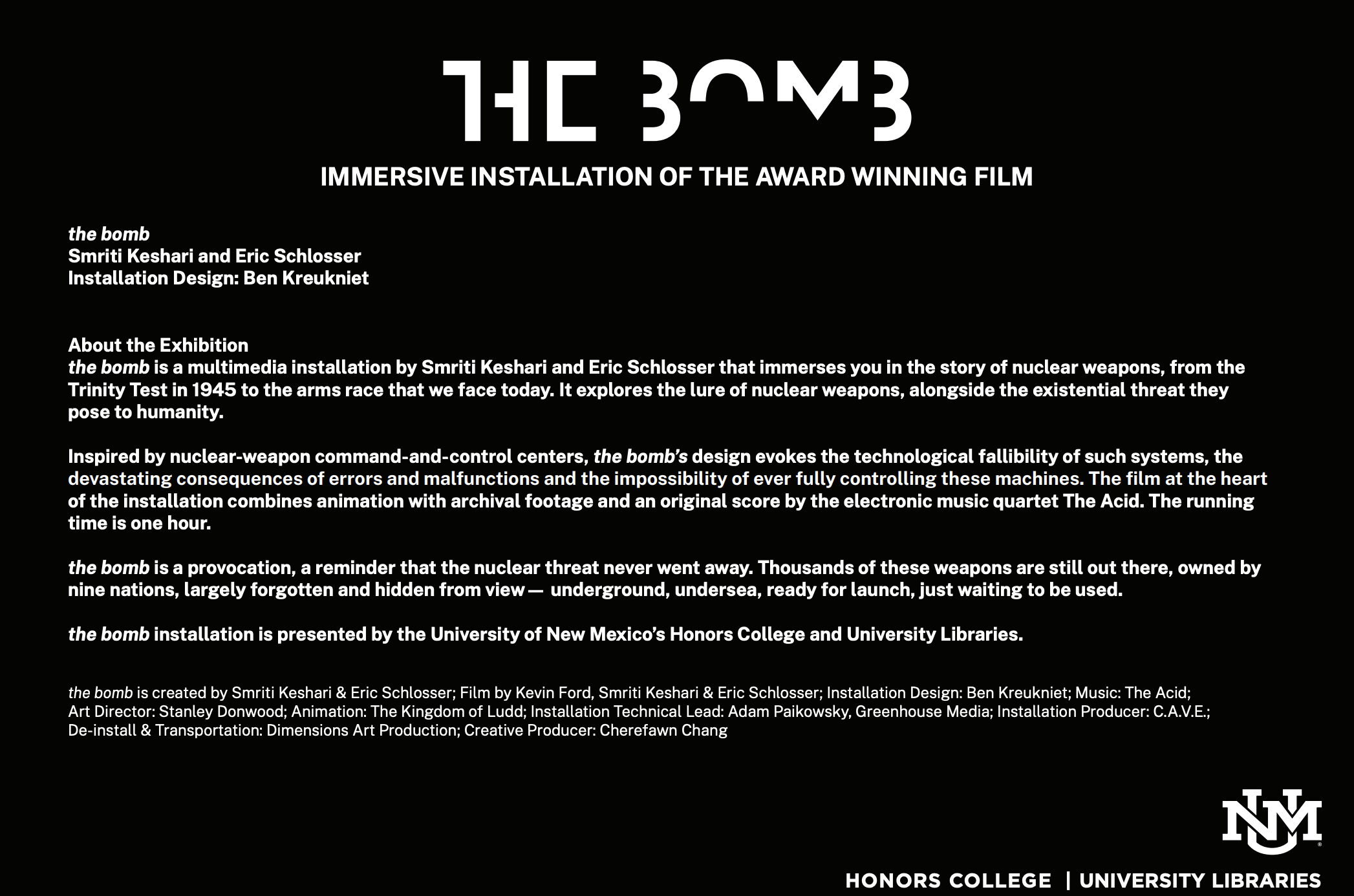
Co-creators
 Eric Schlosser is a writer and filmmaker known for his investigative journalism. His book Command and Control, a finalist for the 2014 Pulitzer Prize in History, describes the challenges of managing America’s nuclear arsenal, from the dawn of the atomic age until the present day. His book Fast Food Nation (2001) helped to launch the modern food movement. He has also helped to produce numerous films, including There Will Be Blood, Food, Inc.., Food Chains, and Food Inc., 2
Eric Schlosser is a writer and filmmaker known for his investigative journalism. His book Command and Control, a finalist for the 2014 Pulitzer Prize in History, describes the challenges of managing America’s nuclear arsenal, from the dawn of the atomic age until the present day. His book Fast Food Nation (2001) helped to launch the modern food movement. He has also helped to produce numerous films, including There Will Be Blood, Food, Inc.., Food Chains, and Food Inc., 2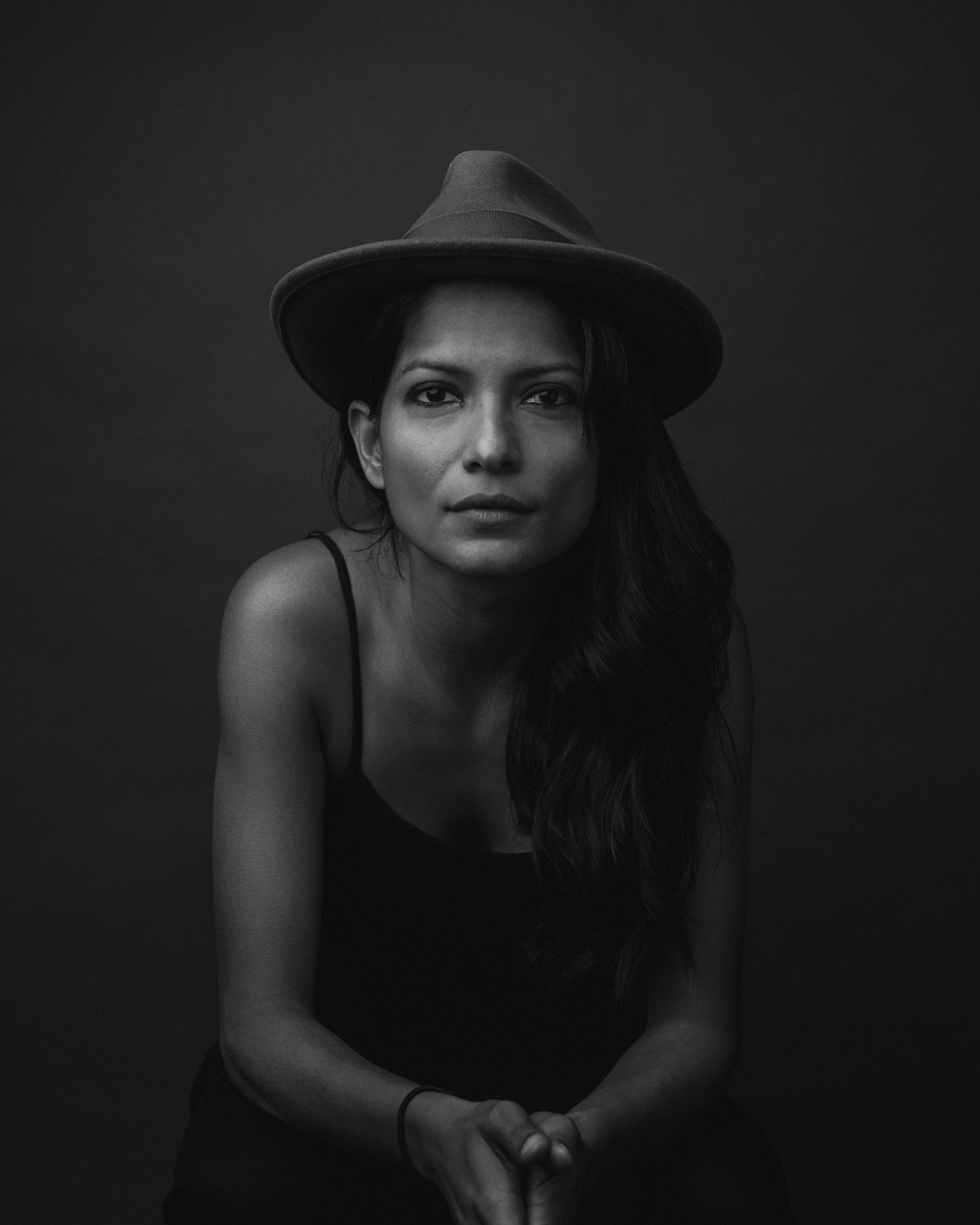 Smriti Keshari is an Indian-American director and artist recognized for her bold approach to visual storytelling. Her work spans traditional filmmaking and art installations, often exploring themes that challenge mainstream narratives. Keshari’s projects have received support from prestigious institutions like the MacArthur Foundation and the Carnegie Corporation. She is an artist-in-residence at the Brooklyn Academy of Music and the National Theatre in London.
Smriti Keshari is an Indian-American director and artist recognized for her bold approach to visual storytelling. Her work spans traditional filmmaking and art installations, often exploring themes that challenge mainstream narratives. Keshari’s projects have received support from prestigious institutions like the MacArthur Foundation and the Carnegie Corporation. She is an artist-in-residence at the Brooklyn Academy of Music and the National Theatre in London.
the bomb Symposium
April 30 & May 1, 2025
The University of New Mexico
Co-coordinated by Myrriah Gómez (Associate Professor, Honors College), Sachi Barnaby (Honors College undergraduate student), and Mel Ribas (University Libraries)
All events are in Zimmerman Library unless otherwise noted. Events will not be livestreamed.
Thank you to our sponsors!
UNM Honors College
UNM University LIbraries
UNM School of Architecture + Planning
UNM Department of Communication & Journalism
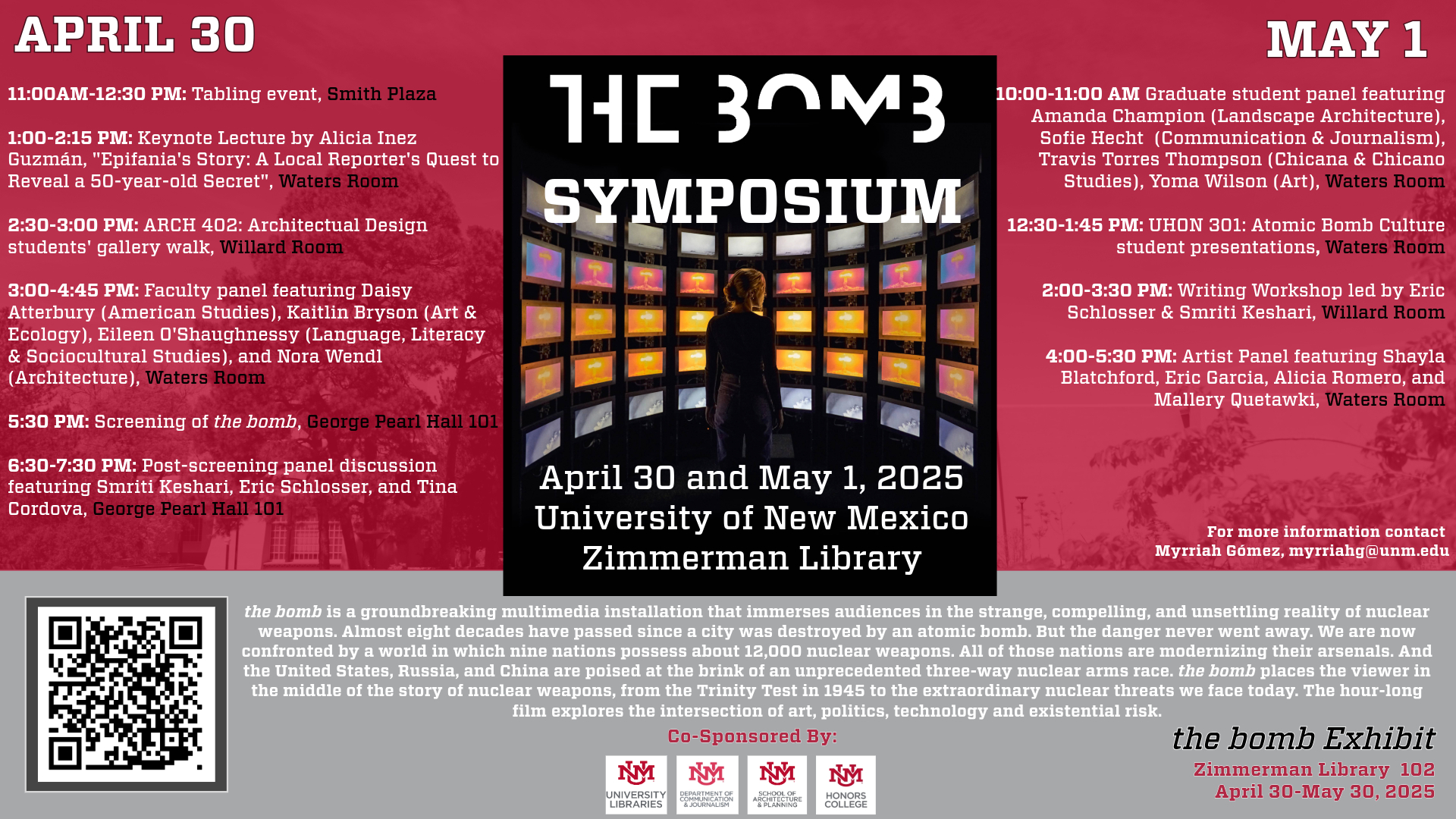
See detailed schedule below:
Join UNM and community organizations to learn about the work being done around nuclear issues in New Mexico.
1:00-2:15 PM: Keynote Lecture: "Epifania's Story: A local reporter's quest to reveal a 50-year-old nuclear secret"
Waters Room, Zimmerman Library
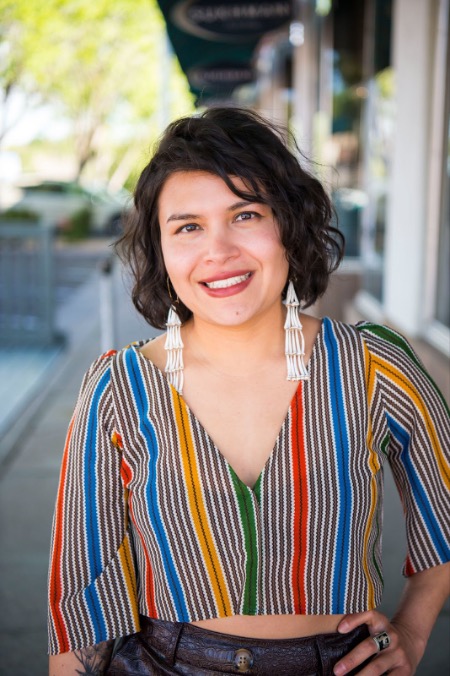 Alicia Inez Guzmán
Alicia Inez Guzmán
Alicia Inez Guzmán was raised in the northern New Mexican village of Truchas on land passed down through many generations of women. Here, we have a word — querencia — which means love of homeland. This querencia is why she weaves histories of place, identity and land use into nearly all of her writing, including on the nuclear industry. As a staff writer for Searchlight New Mexico, a small non-profit news outlet based in Santa Fe, she have spent the last year working as a nuclear reporter, covering the expansion of the weapons industry at Los Alamos National Laboratory. This has been a particularly significant beat for her. She grew up thirty miles as the crow flies from Los Alamos and has borne witness to its Janus-faced presence. On the one hand, it’s allowed local Indigenous and Nuevomexicano families a chance at the good life. On the other hand, it has reaped devastating harms on both people and place. She holds a Ph.D. in visual and cultural studies from the University of Rochester in New York and currently lives in Santa Fe.
Her writing can be found in Searchlight NM, The Nation, The Guardian and Rolling Stone. Awards include a 2017 Andy Warhol Foundation Arts Writers Grant, a 2021 Society for Professional Journalists' Sigma Delta Chi award for excellence in journalism and 2024 MOLLY National Journalism prize in investigative journalism.
2:15-3:00PM: Architecture Students Gallery Walk
Willard Room, Zimmerman Library
Students in the upper-level undergraduate architecture studio, “ARCH 402: A Tale of Two Deserts,” led by Associate Professor Nora Wendl, will share their design proposals–a combination of artifacts and architectural designs that intend to hold the history of the Trinity Test Downwinders. The students include:
Daniela Escalante, Darren Charley, Eric Talavera, Isaac Reichsfeld, Isabella Abeyta-Jefferson, Josiah Leong, Joshua Harned, Lane McConnell-Hand, Mariam Seif, Natalie Ayala, Sarah Roman, and Thasneem Kothalabbai.
3:00-4:45PM: Faculty Panel
Waters Room, Zimmerman Library
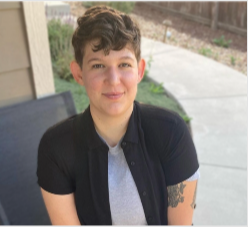 Daisy Atterbury
Daisy Atterbury
Lecturer III and Director of Undergraduate Studies
Daisy Atterbury (they/she) is a Lecturer III of American Studies and Women, Gender and Sexuality Studies at the University of New Mexico where they teach courses in Queer Theories, Gender, Sexuality and U.S. Empire, and Poetics. Atterbury grew up in Shiprock and Santa Fe, New Mexico, and this context informs their writing and scholarship on "sex and space." Their most recent articles have appeared in publications including Post45 Journal, the Journal of Interactive Technology and Pedagogy, and Jacket2, and they have a collaboratively written chapter forthcoming in the book Access, Equity, and Promises: The Third Current of Writing at CUNY in the 21st Century (WAC Clearinghouse 2024).
Atterbury holds a PhD in English with emphasis in Gender, Sexuality and Coloniality and 20/21st Century North American Poetry and Poetics from the Graduate Center, CUNY, an MFA in Poetry from Bard College MFA, and a BA in English from Yale. In 2022-23, they served as Donald C. Gallup Research Fellow at Yale University. As a doctoral candidate, they received an Andrew W. Mellon Fellowship in the Public Humanities through the Seminar on Public Engagement and Collaborative Research. They have also been recipient of a Lost & Found Archival Research Fellowship and Legacy Fellowship from Lost & Found: the CUNY Poetics Document Initiative.
Before arriving to the University of New Mexico, Atterbury taught in the Department of Women and Gender Studies at the University of Colorado, Boulder, and they continue to teach a specialized summer seminar for GWS majors at the University California, Berkeley titled "Gender, Women's Studies and Medicine," which examines the colonial and gendered aspects of US medicine in practice.
Atterbury's hybrid poetry/prose memoir, The Kármán Line, was a finalist for the St. Lawrence Book Award and is forthcoming in 2024. The book explores queer sexualities and narrative theory in a journey to Spaceport America in Truth or Consequences, NM. Their second book (in progress), There's No Space in History, addresses writing in the nuclear context. The book aims to render visible the economic, social, and ideological structures governing social-spatial dynamics in the "American Southwest," which resists a strict knowability and mapability. The book dwells with the lived experiences and political representations of those writing about, within, and through US nuclear colonialism.
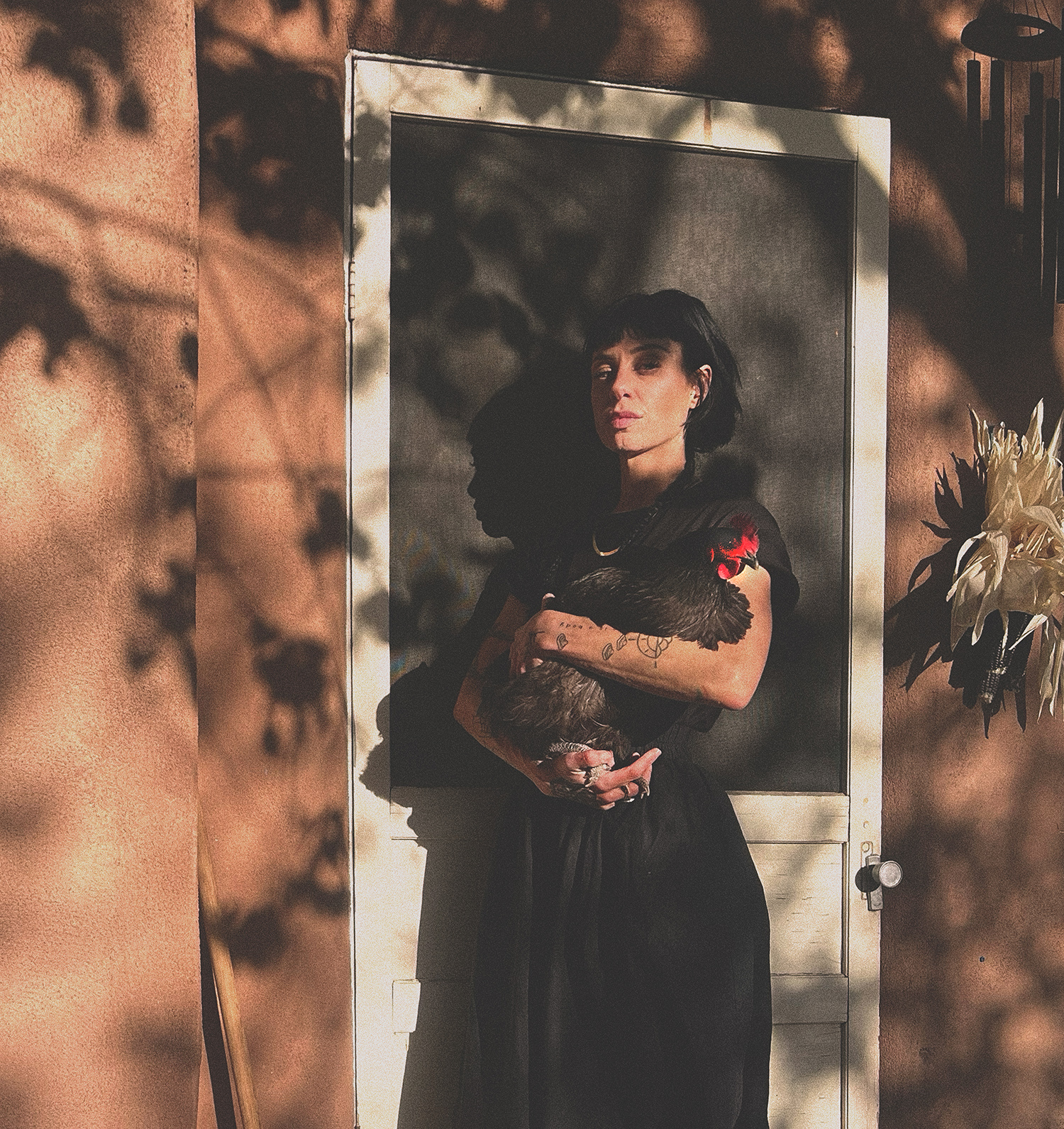 Kaitlin Bryson
Kaitlin Bryson
Lecturer III, Art & Ecology, University of New Mexico
Kaitlin Bryson is a queer transdisciplinary ecological artist and educator based in Santa Fe, New Mexico [USA] concerned with environmental and social justice and multispecies thriving. She primarily works with fungi, plants, microbes and biodegradable materials to engage more-than-human audiences, while also facilitating human communities through ecosocial practice. Her practice is research-based and most often collaborative, highlighting the potency of working like lichens to realize radical change and justice. In 2019, Bryson co-founded The Submergence Collective, an environmental art collective focused on multidisciplinary projects that imagine more collaborative, creative, hopeful, and ecologically connected futures for our human species and the rest of the living world.
Bryson received her MFA in Art & Ecology from the University of New Mexico in 2018, where she concurrently studied art and mycology with research in ecotoxicology. Currently, she holds a Lecturer III faculty position in Art & Ecology at the University of New Mexico and is the Field Coordinator for the Land Arts of the American West Program. Bryson’s transdisciplinary teaching focuses on facilitating ecologically relational practices informed by queer and critical ecology and traditional ecological knowledge, to enroot decolonial, interconnected, contemporary environmental art practices.
She has worked on multiple land and bioremediation projects with Tewa Women United and Communities for Clean Water in New Mexico, USA. She has received support from the Lannan and Andrew W. Mellon Foundation(s) to create ecologically remediative artworks nationally and internationally. She is a recipient of the 2022 Anonymous Was A Woman Environmental Arts Grant, as well as the 2022 Future Art Award: Ecosystem X from Mozaik Philanthropy, and a 2022 Fulcrum Fund from 516 Arts. Bryson has exhibited throughout the United States and Europe, and in Mexico, Ireland, and Nepal as well as in notable festivals such as Ars Electronica (AT) and Politics of the Machine (DE). Her artwork and activism have been featured in books such as “In Search of Mycotopia: Citizen Science, Fungi Fanatics, and the Untapped Potential of Mushrooms”, by Doug Bierend and The New Farmer’s Almanac “The Grand Land Plan” and in the Autumn 2022 Edition of Antennae: The Journal of Nature in Visual Culture. In April of this year, she was selected as one of the “12 Artists to Know In New Mexico” by Southwest Contemporary.
 Eileen O’Shaughnessy
Eileen O’Shaughnessy
CNM, American Studies & Sustainability Studies faculty
UNM, PhD Candidate, LLSS
Eileen O’Shaughnessy, MA, is a nuclear abolitionist organizer, educator, and musician. For over ten years, Eileen has taught courses on nuclear issues, environmental and racial justice, and gender studies at the University of New Mexico (UNM) and the Central New Mexico Community College (CNM) in Albuquerque In 2016, Eileen co-founded Demand Nuclear Abolition (DNA)- a grassroots collective working to challenge the violence of the entire nuclear fuel chain via education, activism, and art. In 2023, DNA worked alongside a broad coalition to help pass State Bill 53, which prevents a company like Holtec International from building a radioactive waste dump without the consent of the people of New Mexico. She is completing a PhD in Educational Thought and Sociocultural Studies at UNM with a dissertation tentatively titled (Un)learning the Bomb: The Nuclear Contract & Public Pedagogy in New Mexico’s Nuclear Industrial Complex. As a professional musician, Eileen has also toured the U.S., Canada, and Europe with her original political folk band Eileen & the In-Betweens.
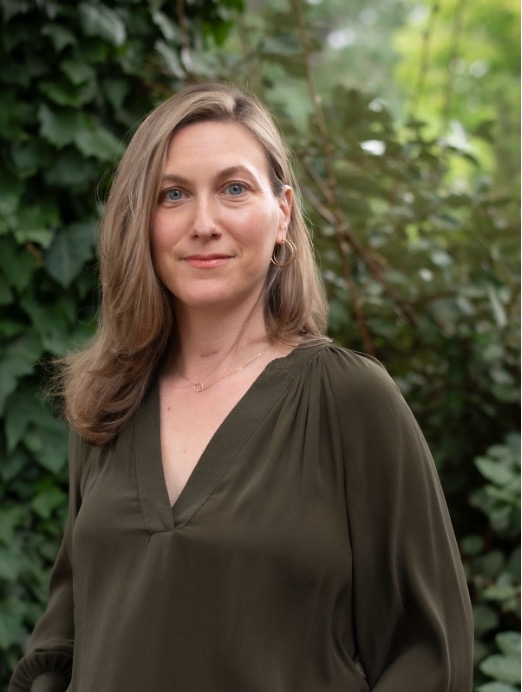 Nora Wendl
Nora Wendl
Associate Professor, Department of Architecture, University of New Mexico
Nora Wendl is an essayist, artist, editor, and associate professor of architecture at the University of New Mexico, where she teaches architecture studio and theory.
Wendl’s work, across scales and media, subverts the received narratives that underpin architectural historiography, engaging feminist archival practices to create essays, books, installations, photographs, and films that offer new forms and frameworks for historicizing the built and unbuilt environments. These works have been supported by the Graham Foundation, Santa Fe Art Institute, and National Trust for Historic Preservation, among other institutions. She has exhibited and published widely, and her most recent book, Almost Nothing: Reclaiming Edith Farnsworth (University of Illinois Press, 2025), was shortlisted for the Graywolf Press Nonfiction Prize. Her recent public scholarship, such as “Trinity Fallout: Nuclear Downwinders in New Mexico” in Places journal, has taken up the question of nuclear coloniality: a subject she also frames in her upper-level architecture studios. From 2021–24, she was the Executive Editor of the Journal of Architectural Education.
5:30PM: Screening of the bomb
Followed by Post-Screening Discussion with Tina Cordova, Eric Schlosser, and Smriti Keshari, Moderated by Myrriah Gómez
George Pearl Hall 101 (School of Architecture and Planning)
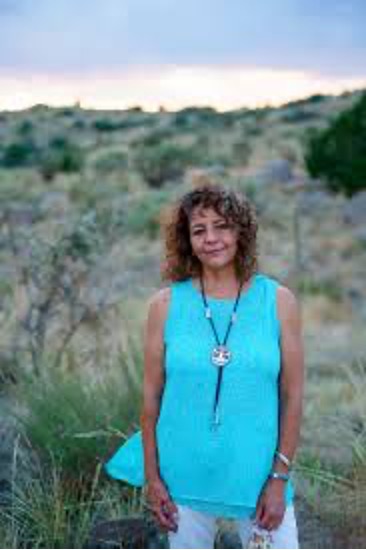 Tina Cordova
Tina Cordova
Co-Founder, Tularosa Basin Downwinders Consortium
Tina Cordova is a sixth generation native New Mexican born and raised in the small town of Tularosa in south central New Mexico. In 2005 Tina co-founded the Tularosa Basin Downwinders Consortium (TBDC) with the late Fred Tyler.
Tina has a Bachelor of Science and a Master of Science degree from New Mexico Highlands University where she majored in Biology and minored in Chemistry. She is the Co-Owner and President of Queston Roofing and Construction that she founded in 1990 with her partner Russ Steward. Tina currently serves as the immediate past President of the New Mexico Roofing Contractors Association and as the Vice President of the New Mexico Highlands University Foundation, her Alma Mater.
The mission of the TBDC is to bring attention to the negative health effects suffered by the unknowing, unwilling, uncompensated, innocent victims of the first nuclear blast on earth that took place at the Trinity site in South Central New Mexico. Ultimately, the goal is the passage of the Radiation Exposure Compensation Act Amendments to bring much needed health care coverage and compensation to those people of New Mexico suffering from the health effects of the Trinity test. Tina is a cancer survivor having been diagnosed with Thyroid cancer when she was 39 years old.
Tina enjoys spending her free time participating in outdoor recreation such as hiking, fishing, hunting and swimming.
 Eric Schlosser is a writer and filmmaker known for his investigative journalism. His book Command and Control, a finalist for the 2014 Pulitzer Prize in History, describes the challenges of managing America’s nuclear arsenal, from the dawn of the atomic age until the present day. His book Fast Food Nation (2001) helped to launch the modern food movement. He has also helped to produce numerous films, including There Will Be Blood, Food, Inc.., Food Chains, and Food Inc., 2
Eric Schlosser is a writer and filmmaker known for his investigative journalism. His book Command and Control, a finalist for the 2014 Pulitzer Prize in History, describes the challenges of managing America’s nuclear arsenal, from the dawn of the atomic age until the present day. His book Fast Food Nation (2001) helped to launch the modern food movement. He has also helped to produce numerous films, including There Will Be Blood, Food, Inc.., Food Chains, and Food Inc., 2
 Smriti Keshari is an Indian-American director and artist recognized for her bold approach to visual storytelling. Her work spans traditional filmmaking and art installations, often exploring themes that challenge mainstream narratives. Keshari’s projects have received support from prestigious institutions like the MacArthur Foundation and the Carnegie Corporation. She is an artist-in-residence at the Brooklyn Academy of Music and the National Theatre in London.
Smriti Keshari is an Indian-American director and artist recognized for her bold approach to visual storytelling. Her work spans traditional filmmaking and art installations, often exploring themes that challenge mainstream narratives. Keshari’s projects have received support from prestigious institutions like the MacArthur Foundation and the Carnegie Corporation. She is an artist-in-residence at the Brooklyn Academy of Music and the National Theatre in London.

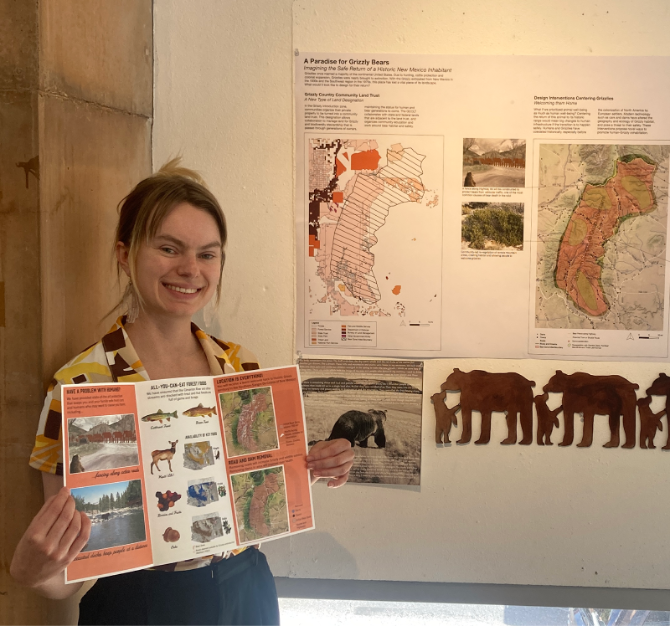 Amanda Champion
Amanda Champion
Master’s Student, Department of Landscape Architecture
Amanda Champion is a candidate for her Masters of Landscape Architecture at UNM. She holds a BA in Biology and Environmental Studies from Whitman College in Walla Walla, WA and hails from the Bay Area (Piedmont, California). Her Master’s Project examines the impact of the nuclear weapons industry on the landscapes and people of New Mexico and includes both a research paper and speculative design project. She strives to design landscapes that uplift regional history and create resilient ecosystems. She is a Bernalillo County Master Naturalist and loves to hike, bird watch and garden.
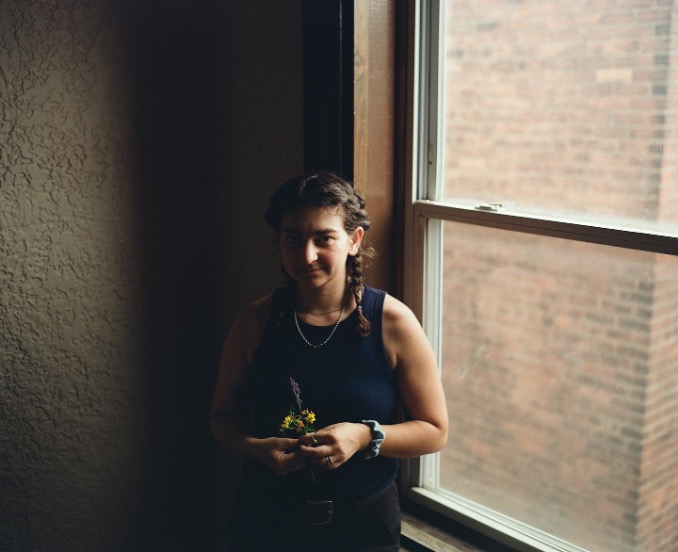 Sofie Hecht
Sofie Hecht
Master’s Student, Department of Communication & Journalism
Sofie Hecht is a documentary photographer born in Brooklyn, New York and based in Albuquerque, New Mexico for the past 6+ years. Her photographic work began in the documentary tradition and evolved into more collaborative projects with her queer community in Albuquerque, particularly through portraiture, documenting drag performances, and returning home to photograph her own biological family. Her interest in collaborative storytelling as well as the polarizing debates around New Mexico’s nuclear history then brought her to work with the Tularosa Basin Downwdiners’s Consortuium (TBDC) from 2022 onward to re-narrativize the traditional stories around the world’s first nuclear bomb that was detonated in Southern New Mexico in 1945. She has been working on a long term storytelling project with TBDC about the effects of radiation exposure on New Mexico’s downwinders and the ripple effects of collective grief and contamination in this area. She is currently a graduate student at the University of New Mexico in the Communications and Journalism Department where she is writing, learning, photographing, and envisioning ways to understand water’s particular role in the nuclear industry’s contamination of New Mexican peoples, land, and bodies. Her thesis offers creative approaches to storytelling that convey water’s affective and metaphoric properties as a vessel for contamination and a source of life.
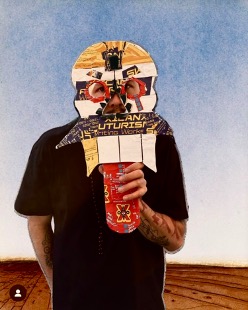 Travis Torres Thompson
Travis Torres Thompson
MA student, Department of Chicana and Chicano Studies
Travis Torres Thompson is from Arroyo Hondo, near the town of Taos in northern New Mexico. He is an artist, woodworker and carver, having built cabinetry and traditional furniture at shops in Taos and Seattle, Washington. Travis is a graduate student in Chicana & Chicano Studies at the University of New Mexico and holds a BA from UNM with a double major in Anthropology and Native American Studies. Since 2023, he has been the Distinctive Native American Collections Fellow at the Center for Southwest Research and Special Collections, where he assists with archival projects and generating new culturally appropriate models of managing archival content. His research focuses on community archives, storytelling, critical mystery studies, and nuclear culture; and is currently working on writing and illustrating a long graphic poem about nuclear colonialism and the nuclear industrial complex in New Mexico.
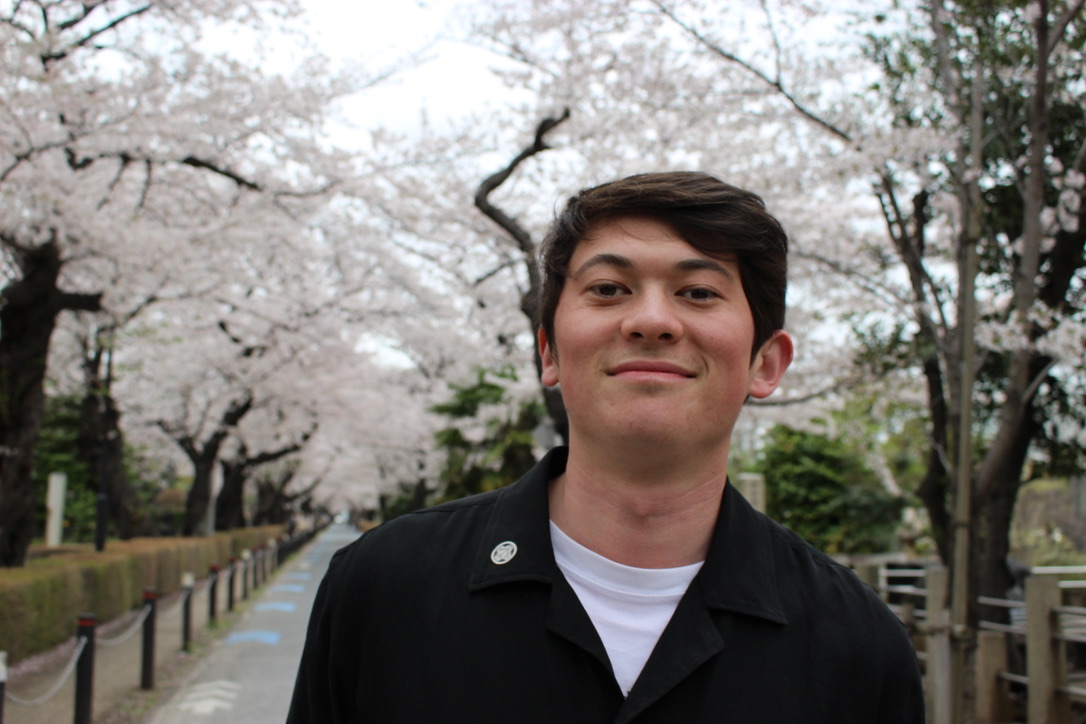 Yoma Wilson
Yoma Wilson
Master’s Student, Department of Art
12:30-1:45PM: UHON 301: Atomic Bomb Culture student presentations
Waters Room, Zimmerman LIbrary
Students in the upper-level undergraduate architecture studio, “UHON 30a: Atomic Bomb Culture,” led by Associate Professor Myrriah Gómez, will share their final projects that present the students' perspectives on nuclear furtures. The students include:
Adriana Archuleta, Olivia Armour, Karina Bolaños, Michael-Angelo Brooks, Candis Canaday, Itzel Diaz, Madison Figueroa, Mia Gallegos, Ashley Hammer, Marcela Johnson, Andre Kahn, Florian Knowles, Lourdes LeDoux, Zephan Mayeda, Bethany Padilla, Jordyn Suber, and Natalia Torrez
2:00-3:30PM: Workshop on Storytelling and Crafting Compelling Narratives led by Eric Schlosser and Smriti Keshari (sign-up required)
Willard Room, Zimmerman Library
Workshop on Storytelling and Crafting Compelling Narratives
Join us for a powerful and immersive workshop designed to explore the art of storytelling and creating impactful calls to action around serious global issues such as nuclear disarmament. Facilitated by award-winning filmmakers and artists Eric Schlosser and Smriti Keshari, the creators of the critically acclaimed film The Bomb, this session will dive deep into how storytelling can shape public perception and drive meaningful change.
In this interdisciplinary workshop, participants will learn how to communicate complex topics with urgency and emotion, engaging audiences across various platforms. Schlosser and Keshari will share their creative processes, drawing from their experiences of blending visual storytelling with political advocacy, and offer insights into how compelling narratives can spark conversations, raise awareness, and inspire action on some of the world’s most pressing issues both locally and globally.
Key takeaways:
Learn techniques for creating compelling narratives around complex, serious topics.
Understand how to craft clear, urgent calls to action that resonate with diverse audiences.
Gain insights from The Bomb, an award-winning film that brings the dangers of nuclear weapons to the forefront.
Engage in hands-on exercises to practice developing your own storytelling skills and calls to action.
This workshop is intended for students in the Department of Communications + Journalism. Seats are limited to 15.
4:00-5:30PM: Artist Panel
Waters Room, Zimmerman Library
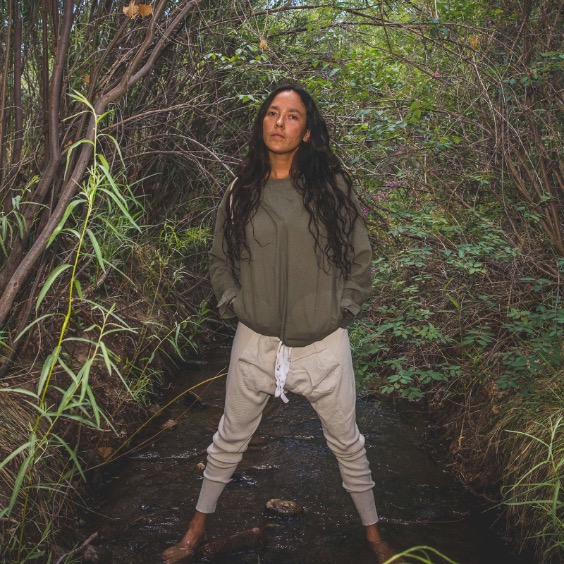 Shayla Blatchford (Diné)
Shayla Blatchford (Diné)
Photographer
Founder, The Anti-Uranium Mapping Project
Based in Santa Fe, New Mexico, Shayla Blatchford is a commercial and documentary photographer whose work is rooted in storytelling, empathy, and cultural reclamation.
Originally from California, Blatchford’s early life offered limited access to her Native heritage—a disconnect that became the foundation for a lifelong journey of rediscovery through the camera lens.
Her mother’s extensive genealogical research served as the catalyst, igniting a deep desire to reconnect with ancestral knowledge and her family’s ways of being. Photography became more than a medium—it became a bridge. Through a practice grounded in trust-building and care, Blatchford creates space for individuals to share their stories on their own terms, with dignity and protection.
This ethos drives their most recent initiative, the Anti-Uranium Mapping Project— a counter-mapping platform that challenges the systemic erasure of communities affected by uranium mining. Recognizing the deliberate censorship of these histories, Blatchford uses her work to center silenced narratives and amplify voices too often ignored. Her photography is a call for justice, a vessel of memory, and a commitment to witnessing with reverence.
 Eric Garcia
Eric Garcia
Eric J. García uses history and a graphic style to create political art that confronts our understanding of the present. Using sculpture, mixed media installations, murals, printmaking and his controversial political cartoons, he aims to challenge his viewers to question sources of power and the whitewashing of history. After receiving his BFA with a minor in Chicano studies from the University of New Mexico, Eric Garcia went on to complete his MFA at the School of the Art Institute of Chicago. He is a core member of the printmaking collective, Instituto Gráfico de Chicago, one of the newest member’s of the Justseeds Cooperative, a part of the emerging Veteran Art Movement, and is a dedicated teaching artist. Garcia has exhibited nationally and his work can be found in the collections of the National Museum of Mexican Art, the National Hispanic Cultural Center, the Art Institute of Chicago and the Smithsonian American Art Museum.
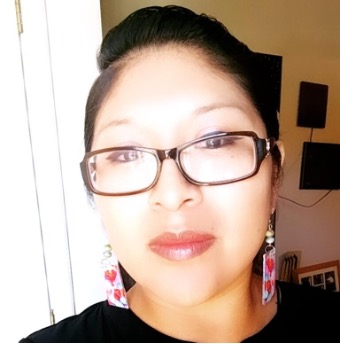 Mallery Quetawki
Mallery Quetawki
Mallery Quetawki is from Zuni Pueblo and of the Badger Clan and child of the Turkey Clan. She is the mother of two and shares residence in both Albuquerque and Zuni Pueblo. She received her B.S. in Biology with a minor in Art studio in the summer of 2009 from UNM-ABQ. Mallery was also recently admitted into Johns Hopkins Bloomberg School of Public Health for her MPH studies that she will start in the Summer of 2025. She is currently a Communications and Outreach Specialist with the Community Environmental Health Program at the University of New Mexico College of Pharmacy. Mallery has used art to translate scientific ideas, health impacts and research on uranium mines that are currently undergoing study in several Indigenous communities. Her work has been featured on National Institutes of Health websites and published in peer-reviewed journals on environmental health and academic medicine.
Mallery has a large-scale mural titled, “Morning Prayer”, on permanent display at the Indian Pueblo Cultural Center which depicts the history of the Zuni People. Other noted works include an interactive Google Doodle that kicked off Native American Heritage Month on November 1, 2021. From 2023-2024, Mallery’s painting entitled, “Our Cultures, Our Languages” was projected on the entrance to the Grounded in Clay exhibit at the Metropolitan Museum of Modern Art in New York City.
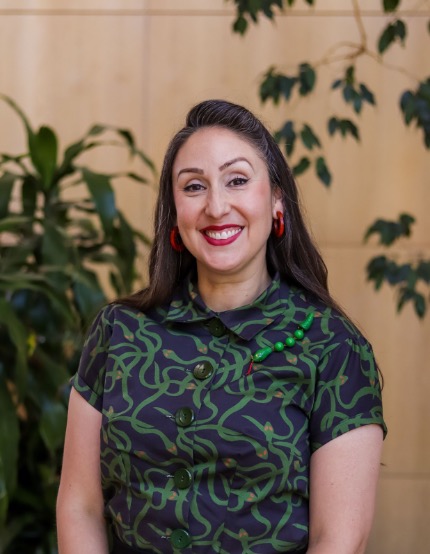 Alicia Romero
Alicia Romero
Curator of History, Albuquerque Museum
Alicia Romero was born and raised in Albuquerque but did a lot of growing up in Santa Cruz, New Mexico with her grandparents and extended family members. She received her Ph. D. in History at the University of California, Santa Cruz. She is currently the Curator of History at the Albuquerque Museum following her service as Head Curator at the New Mexico History Museum in Santa Fe. As a curator and scholar, Alicia’s primary exhibition focus revolves around telling untold or incomplete histories of marginalized communities in New Mexico, the greater Southwest, and Mexico.



Social Media
For news, information, prizes and more fun stuff follow us on our social media!
Honors College Resources